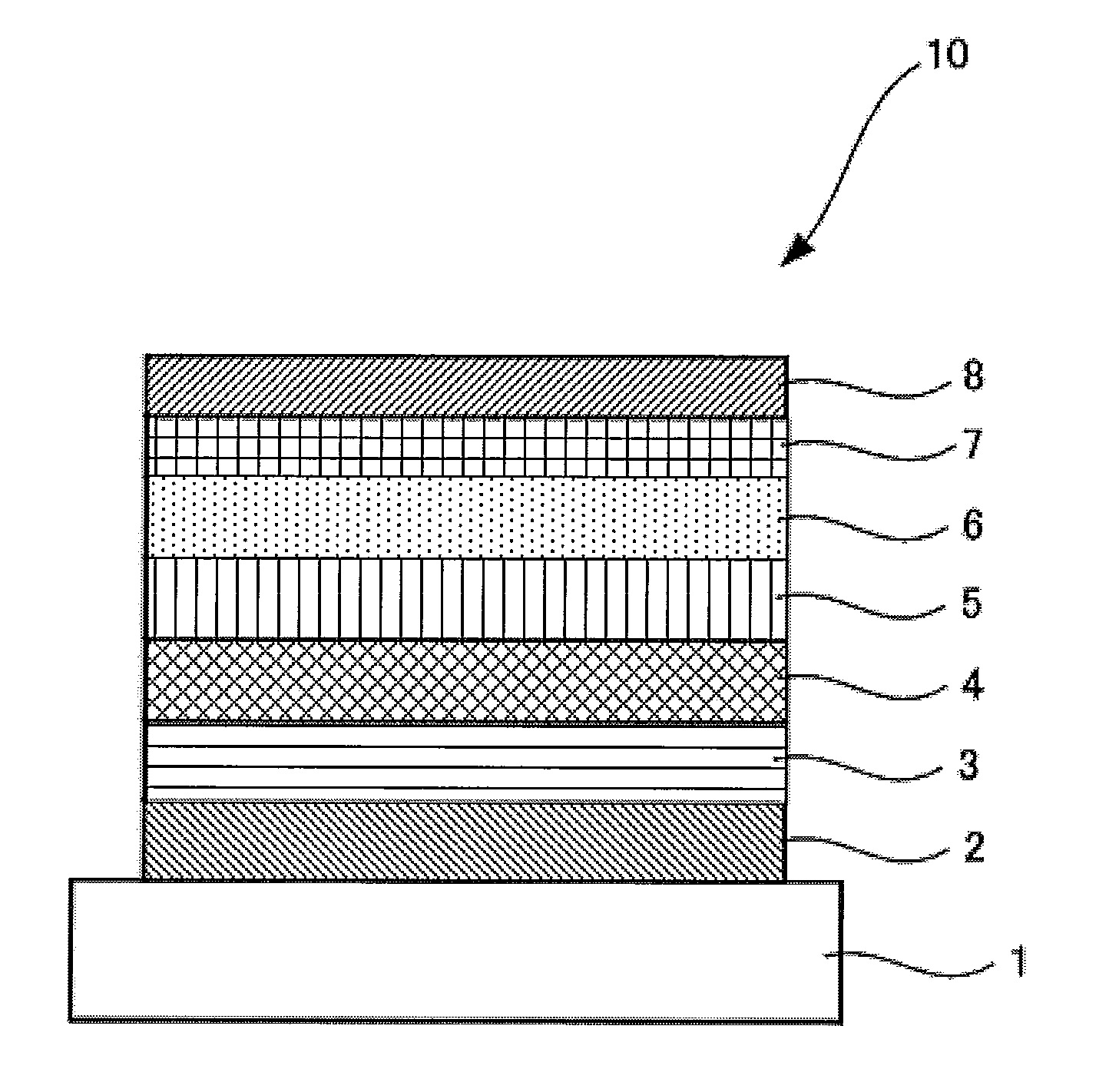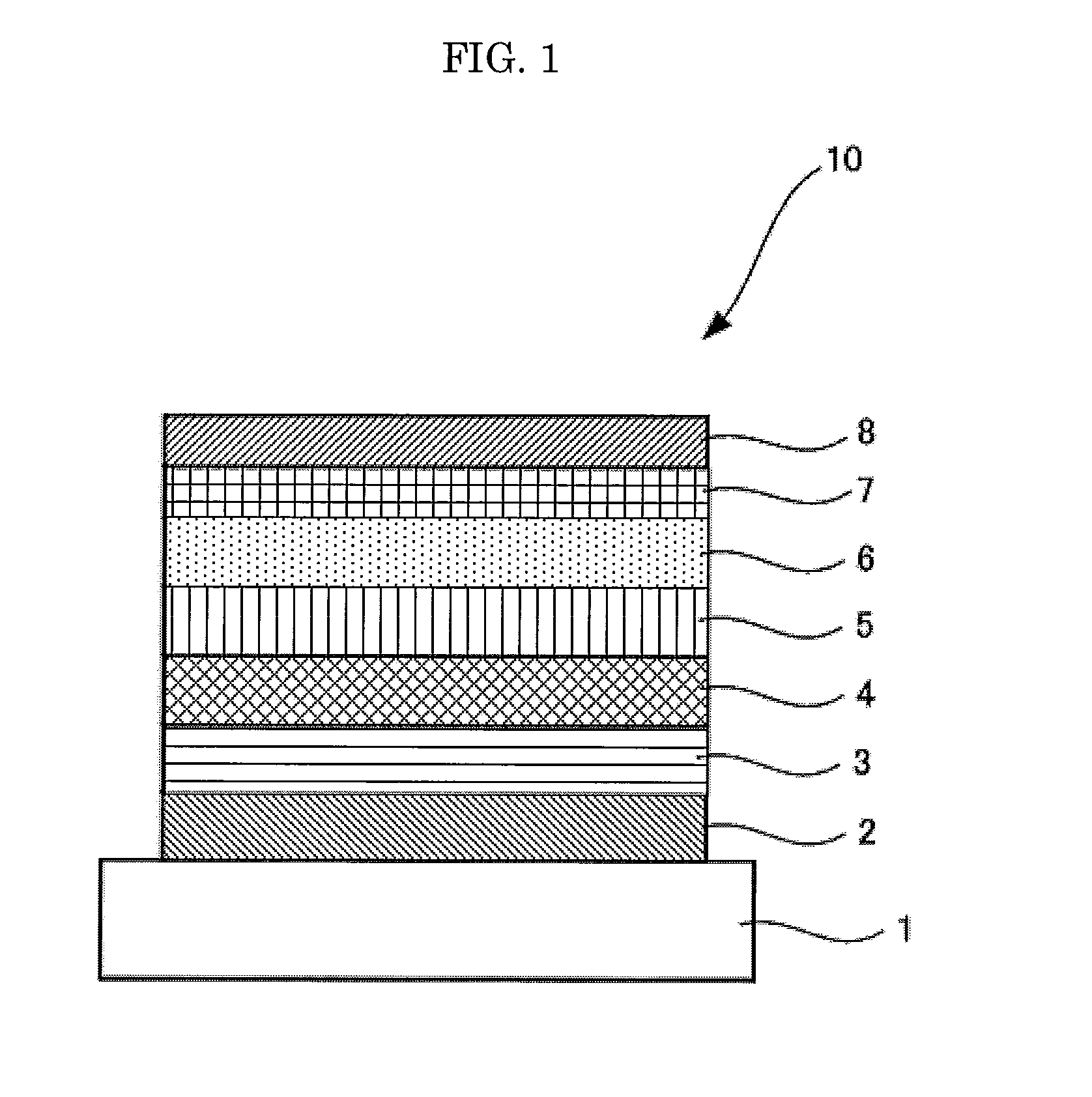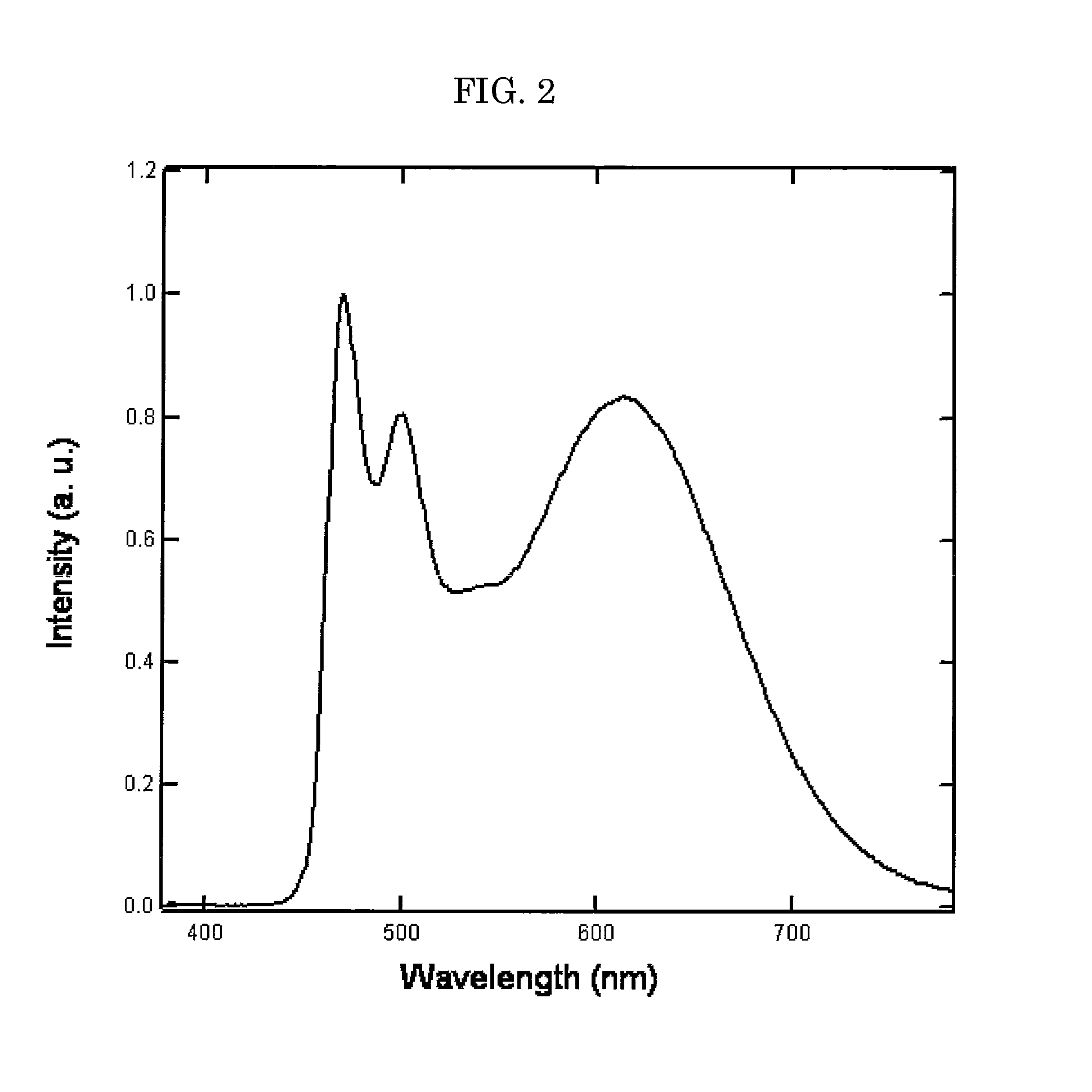Organic electric field light-emitting element
a technology of electric field and light-emitting element, which is applied in the direction of discharge tube luminescnet screen, other domestic articles, organic semiconductor devices, etc., can solve the problems of chromaticity change, chromaticity change, and no consideration is paid for preventing chromaticity change, so as to improve emission efficiency and permanence, the effect of preventing a chromaticity change of emission
- Summary
- Abstract
- Description
- Claims
- Application Information
AI Technical Summary
Benefits of technology
Problems solved by technology
Method used
Image
Examples
example 1
Preparation of White Association Emission Light-Emitting Element
[0167]A glass substrate having a thickness of 0.5 mm and a side of 2.5 cm was placed in a washing container, and subjected to ultrasonic washing in a neutral detergent, and then subjected to ultrasonic washing in purified water. Thereafter, the glass substrate was subjected to heat treatment at 120° C. for 120 minutes, followed by subjected to UV-ozone treatment for 30 minutes. On this glass substrate, each layer was deposited by vacuum deposition. Note that, in the following Examples and Comparative Examples, the deposition speed was 0.2 nm / sec unless otherwise stated. The deposition speed was measured by a quartz resonator. Moreover, the thickness of each layer was measured by a quartz resonator.
[0168]At first, on the glass substrate, indium tin oxide (ITO) was deposited by sputtering to give a thickness of 100 nm to thereby form an anode.
[0169]Next, on the anode (ITO), 4,4′,4″-tris(N,N-(2-naphthyl)-phenylamino)triphe...
example 2
Preparation of White Emission Single Layer Light-Emitting Element
[0185]A organic electric field light-emitting element of Example 2 was prepared in the same manner as in Example 1, provided that mCP was doped with 15% by mass of Compound 3 expressed by the following structural formula, 0.13% by mass of Compound 4 expressed by the following structural formula, and Compound 5 where the doping amount of Compound 5 was continuously changed from 0.13% by mass (at the side of Compound 1) to 0.2% by mass (at the side of Balq), all relative to the amount of mCP.
[0186]The layer structure of the organic electric field light-emitting element of Example 2 was as presented below. Note that, the values given in the brackets indicate the thickness of each layer.
example 3
Preparation of White Emission Single Layer Light-Emitting Element
[0191]An organic electric field light-emitting element of Example 3 was prepared in the same manner as in Example 1, provided that mCP was doped with Compound 3 expressed by the structural formula above where the doping amount thereof was continuously changed from 15% by mass (at the side of Compound 1) to 13% by mass (at the side of Balq), 0.13% by mass of Compound 4 expressed by the structural formula above, and 0.13% by mass of Compound 5 expressed by the structural formula above, all relative to the amount of mCP.
[0192]The layer structure of the organic electric field light-emitting element of Example 3 was as presented below. Note that, the values given in the brackets indicate the thickness of each layer.
PUM
 Login to View More
Login to View More Abstract
Description
Claims
Application Information
 Login to View More
Login to View More - R&D
- Intellectual Property
- Life Sciences
- Materials
- Tech Scout
- Unparalleled Data Quality
- Higher Quality Content
- 60% Fewer Hallucinations
Browse by: Latest US Patents, China's latest patents, Technical Efficacy Thesaurus, Application Domain, Technology Topic, Popular Technical Reports.
© 2025 PatSnap. All rights reserved.Legal|Privacy policy|Modern Slavery Act Transparency Statement|Sitemap|About US| Contact US: help@patsnap.com



